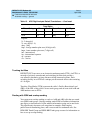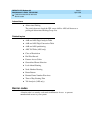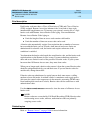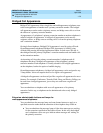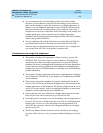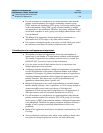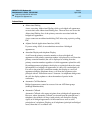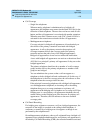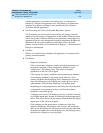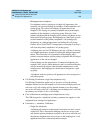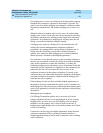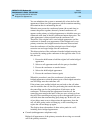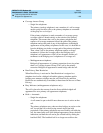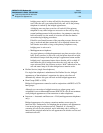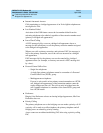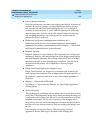
DEFINITY ECS Release 8.2
Administrator’s Guide
555-233-506
Issue 1
April 2000
Features and technical reference
1179Bridged Call Appearance
20
with the appearance is recorded as the calling party. A conference or
transfer by a bridged call appearance on a zero primary call appearances
telephone also appears as though it were performed by the extension
associated with the appearance.
■ Call Forwarding All Calls, Call Forward Busy/Don’t Answer
Call Forwarding can be activated or canceled for the primary extension
number from any bridged call appearance of that number. When activated,
calls to the primary extension number do not terminate at the bridged call
appearances, but go to the designated forwarding destination. Bridged call
appearances do not receive redirection notification of the call to the
primary extension when it is forwarded unless Ringing — Abbreviated and
Delayed is administered.
■ Call Park
When a call is parked from a bridged call appearance, it is parked on the
primary extension number.
■ Call Pickup
— Single-line telephones
Calls to the primary telephone, alerting at bridged appearances of
the primary telephone, can be picked up by member’s of the
bridging user’s call pickup group. This causes all bridged
appearances of the call to be dropped.
Calls ringing at a primary telephone can be picked up by members
of the primary telephone’s call pickup group. However, if the
primary telephone and the bridging user’s telephone are not in the
same call pickup group, the bridging user cannot pick up calls to
other members of the primary telephone’s call pickup group.
Originating on a bridged appearance and dialing the call pickup FAC
is interpreted as an attempt to pick up a call from the primary
telephone’s call pickup group.
A bridging user can use Call Pickup to pick up a call that is alerting
at a bridged appearance, instead of selecting the bridged appearance
button. This causes the call at the primary telephone and all bridged
appearances of the call to be dropped.
If the bridging user has appearances of numerous single-line
(primary) telephones (for example, sales, service, and warehouse),
and it is not desired that the calls be answered by anyone other than
the primary telephone user or the bridging users, the bridging user(s)
should not be assigned to a pick up group.



